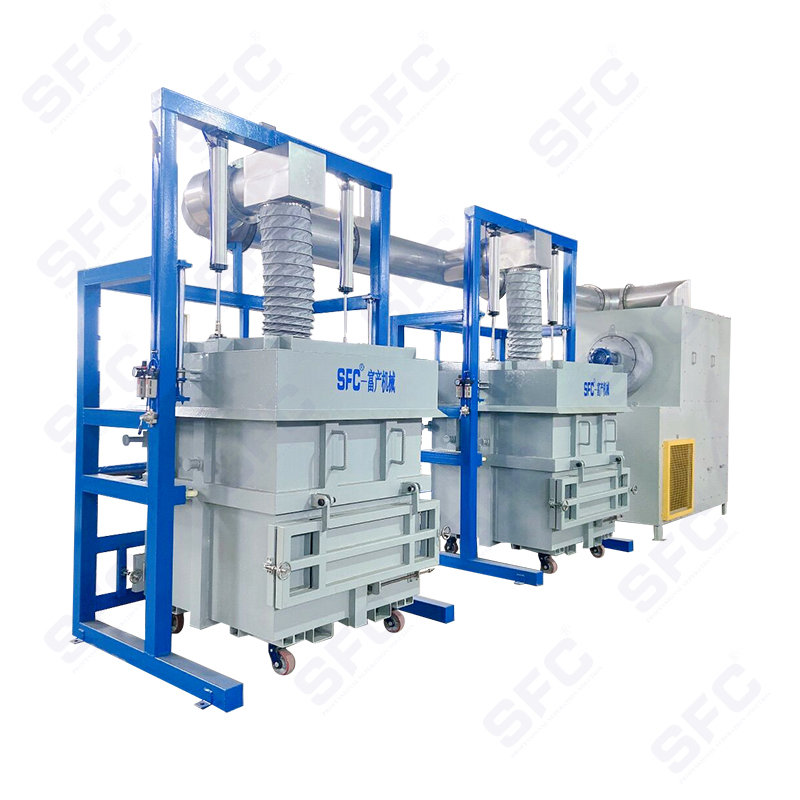Sludge Drying Machines: Revolutionizing Wastewater Treatment and Waste Management
In the field of wastewater treatment, managing sludge is one of the most challenging and costly aspects. Sludge, the byproduct of wastewater treatment processes, often contains a high percentage of water, making its disposal and treatment inefficient and expensive. To address this, sludge drying machines have emerged as a crucial technology in improving the handling, storage, and disposal of sludge. These machines not only reduce the volume of sludge but also enhance its potential for reuse or recycling.
Sludge is generated during the treatment of wastewater in municipal and industrial treatment plants. After the initial treatment steps like primary clarification and biological treatment, the remaining sludge is often left with a high water content, typically around 95-99%. This high water content makes the sludge heavy, difficult to transport, and expensive to dispose of in landfills. Additionally, untreated sludge can release unpleasant odors, pose a risk of pathogens, and contribute to environmental pollution.
Sludge drying aims to address these issues by removing the excess moisture, resulting in a much more concentrated, dry sludge that is easier to manage. This dried sludge can be used in a variety of ways, including as a resource for energy recovery, as a fertilizer in agriculture, or in some cases, as a raw material in certain industries. By reducing the water content, sludge drying helps to significantly lower transportation, disposal, and storage costs.
Several technologies are available for drying sludge, each offering specific advantages based on factors such as sludge composition, available space, energy consumption, and end-use objectives.
Rotary drum dryers are one of the most widely used technologies for sludge drying. These machines consist of a rotating drum that is heated either directly or indirectly. The wet sludge is fed into the drum, where it is exposed to hot air or gases, causing the moisture to evaporate. The drum's rotation ensures that the sludge is evenly exposed to the drying air, resulting in efficient moisture removal.

Suitable for large volumes of sludge
Continuous operation, leading to consistent performance
Can handle various types of sludge, including municipal and industrial
Belt dryers use a series of moving belts to transport sludge through a drying chamber. Hot air is blown across the sludge as it moves along the belts, evaporating the water content. These dryers are designed for continuous operation, providing high throughput with relatively low energy consumption.
Advantages:
Low energy usage compared to rotary drum dryers
More compact design, saving space in treatment plants
Ability to handle large amounts of sludge with minimal maintenance
Slow drying process, requiring large areas of land for installation
Benefits of Sludge Drying Machines
The implementation of sludge drying technologies offers numerous benefits for wastewater treatment facilities, the environment, and the economy:
Volume Reduction: Sludge drying can reduce the volume of wet sludge by up to 90%. This substantial reduction in volume makes the handling, transportation, and storage of sludge much more efficient and cost-effective.
Energy Recovery: Dried sludge can be used as a fuel source for energy recovery, such as in incinerators or in biogas production. This provides an additional revenue stream or energy savings for treatment plants.
Waste-to-Resource: Dry sludge can be repurposed as a valuable resource in agriculture, where it is often used as a soil conditioner or fertilizer due to its high nutrient content. This reduces the environmental impact of sludge disposal and promotes the circular economy.
Cost Savings: By significantly reducing the volume of sludge, drying machines lower transportation and disposal costs. Additionally, energy recovery from dried sludge can reduce operational costs for wastewater treatment facilities.
Improved Environmental Impact: Sludge drying reduces the environmental footprint of wastewater treatment plants by minimizing landfill waste and decreasing the need for chemical treatments. The dry sludge can also be reused in agricultural applications, further reducing the demand for synthetic fertilizers.



 English
English Español
Español













